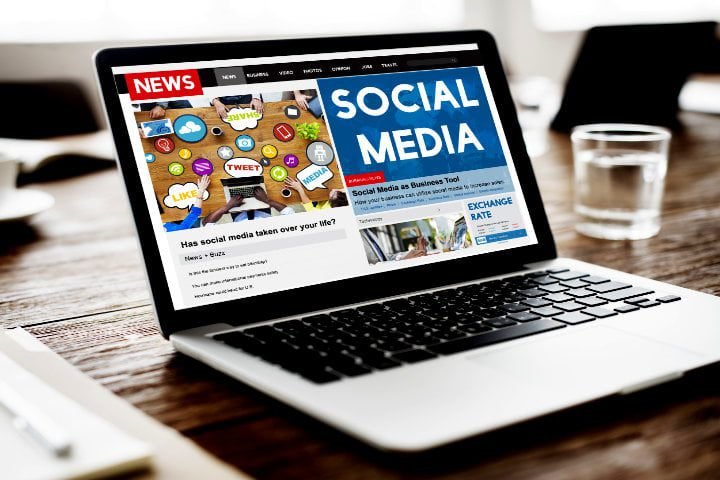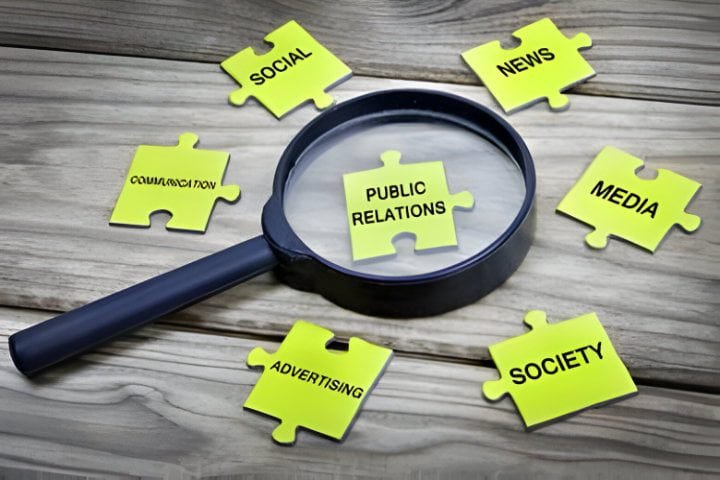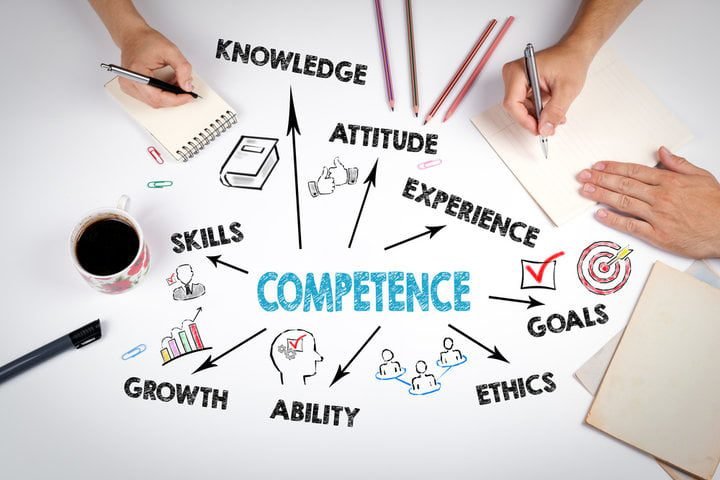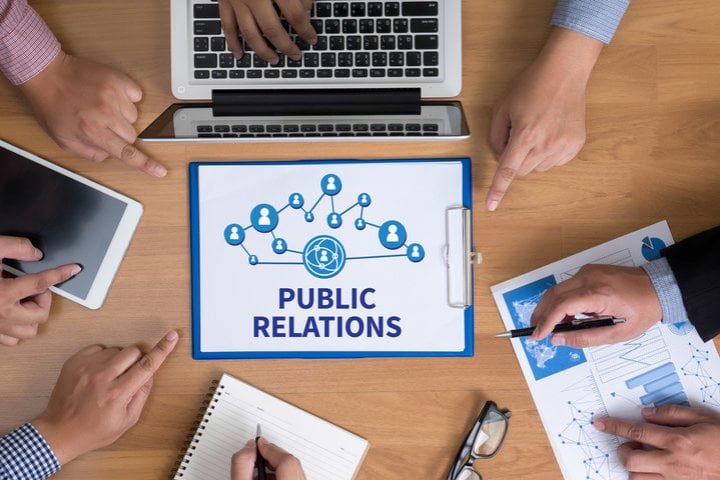In the dynamic domain of public relations (PR), adopting and proficiently utilizing PR communication tools is crucial for organizations aiming to uphold a favorable public perception and build strong relationships with their target audiences.
In This Article
PR communication media can be broadly classified into two categories: external media and internal media.
Media for External Communication
External communication strategies determine how organizations present themselves to the world, manage media relations, and engage with customers and stakeholders.
- Annual Reports
- Printed literature
- Direct Mail
- Exhibitions and Open Days
- Special Events
Annual Reports
Annual reports summarize the year’s business performance and are a powerful PR communication tool. Annual reports can bolster investor confidence and enhance the organization’s reputation by transparently showcasing achievements, financial health, and future plans.
Printed Literature
Printed materials like brochures, leaflets, and booklets remain significant, especially in industries where physical presence and direct customer engagement are crucial. These materials facilitate a tangible connection with the audience, giving them something to hold, read, and reference.
Direct Mail
Direct mail, though often perceived as an older method of communication, offers a personalized touch that digital methods sometimes fail to deliver. Tailored messages can break through the digital clutter, fostering a more intimate connection with the recipient.
Exhibitions and Open Days

Exhibitions and open days allow organizations to showcase their products, services, and company culture physically. These events provide a platform for direct interaction, feedback, and networking, which is essential for building trust and relationships.
Special Events
Hosting or participating in special events increases visibility and offers unique opportunities for engagement. Such events can be leveraged for media coverage, enhancing the organization’s profile and reach.
Media for Internal Communication
Internal communication is equally pivotal, serving as the backbone of an organization’s health and its ability to project a unified vision to the outside world. Efficient internal PR communication tools facilitate a positive working environment and empower employees, turning them into brand ambassadors.
- Induction Literature
- House Journal
- Bulletin Boards
- Societies and Clubs
- Idea Boxes
Induction Literature
Induction literature is an essential PR communication tool designed to welcome new hires into the company culture and acquaint them with corporate values, policies, and colleagues. It is the first touchpoint an employee has with an organization’s internal communication strategy. It goes beyond mere orientation.
Effective induction literature can significantly impact employee retention and satisfaction by providing a clear, welcoming introduction to the company’s environment, expectations, and ethos. Induction literature reflects the company’s brand and culture and is a powerful instrument of engagement and alignment.
House Journal
A house journal is an internal PR communication tool, that serves as a medium to share company news, achievements, employee stories, and management messages with the entire workforce. It helps in building a sense of community and keeping communication lines open. It includes executive updates on personal milestones and bridges the gap between different levels of the organization, promoting transparency and inclusivity.
House journals are regular, accessible, and interactive, encouraging employees to contribute and engage with the content, enhancing their connection to the organization.
Bulletin Boards

Bulletin boards are a physical space for posting important notices, updates, company achievements, and even employee recognition. They are usually put in common areas. They complement digital tools by offering a tangible reminder of organizational happenings and fostering a sense of community.
Societies and Clubs
Societies and clubs within an organization offer a unique platform for internal PR, enabling employees to connect over shared interests, whether professional or personal. These groups can significantly enhance workplace culture by promoting work-life balance, collaboration, and networking beyond the confines of professional roles.
They also serve as an informal yet potent communication channel, where ideas and feedback flow freely, contributing to innovation and improvement.
Idea Boxes
Idea boxes, or suggestion boxes, are a classic yet effective means of encouraging direct feedback and ideas from employees. They symbolize an organization’s commitment to openness, innovation, and continuous improvement and encourage a culture of empowerment and ownership.
PR Communication Tools
- Press Release
- Newsletters
- Press Conference
- Publicity
- Social Media
- Blogging
- Interviews and Exclusive Rights
- Community Involvement
Press releases

The press release is a cornerstone among PR communication tools, offering a direct channel to the media. Crafting compelling and newsworthy press releases can capture the attention of journalists and media outlets, leading to coverage that enhances credibility and visibility.
Newsletters
Newsletters are a versatile tool for maintaining ongoing communication with an audience. They can be used to share updates, insights, and stories, fostering a sense of community and keeping the audience engaged over time.
Press Conference

Press conferences are critical for making major announcements or addressing significant issues. They offer a controlled environment to convey your message, answer questions, and interact with the media, ensuring the accurate and broad dissemination of information.
Rather than setting up interviews with individual reporters or sending out press releases, press conferences allow one to interact with a roomful of journalists all at once, effectively disseminating public relations messages quickly.
Publicity
It is a type of promotion that relies on the public relations effect of a news story, usually carried out by mass media.
Publicity involves gaining media coverage without direct payment, relying on the news value of events or stories. It’s a powerful way to build an image and brand awareness through third-party validation.
The main objective of publicity is not sales promotion but creating an image through editorial or ‘independent source’ commentary. While the publicist can control the story’s content, he or she may not have any control over its placement or interpretation by the media.
Social Media

Social media participation allows PR practitioners to monitor attitudes toward their company and fine-tune the public relations strategy in response. PR practitioners monitor references to the company or products on social media, such as Facebook, Twitter, or product review sites, and respond to positive and negative comments. Engaging in dialogue helps build positive attitudes and improves the company’s reputation.
Blogging
To reach the online audience, PR specialists use the digital forms of press releases and newsletters, but they also use various other tools such as blogging and, more recently, microblogging. It allows them to create and maintain relationships with the target audience and establish two-way communication.
Interviews and Exclusive Rights
Securing interviews and offering exclusive rights to certain media outlets can strengthen relationships with journalists and ensure more in-depth, favorable coverage. It’s a strategic way to influence the narrative and reach target audiences through trusted voices.
Community Involvement
Engaging with the community demonstrates a commitment to social responsibility and can significantly enhance an organization’s image. Activities such as charity events, sponsorships, and volunteer work can build goodwill and positive associations with the brand.
Integrating PR Communication Tools in the Digital Era

Integrating traditional and modern PR communication tools is essential in the digital era. Digital advancements have transformed the landscape, making tools like social media and blogging indispensable for real-time engagement and feedback. Moreover, using analytics and data-driven strategies allows for optimizing PR efforts, ensuring messages reach the intended audience with maximum impact.
To optimize content for “PR Communication Tools,” it’s crucial to emphasize the evolution of these tools and their application in a digital context. This includes discussing best practices for digital PR, the importance of SEO in press releases, and the role of social media in crisis management. Additionally, exploring case studies and success stories can provide practical insights into effective PR strategies.





